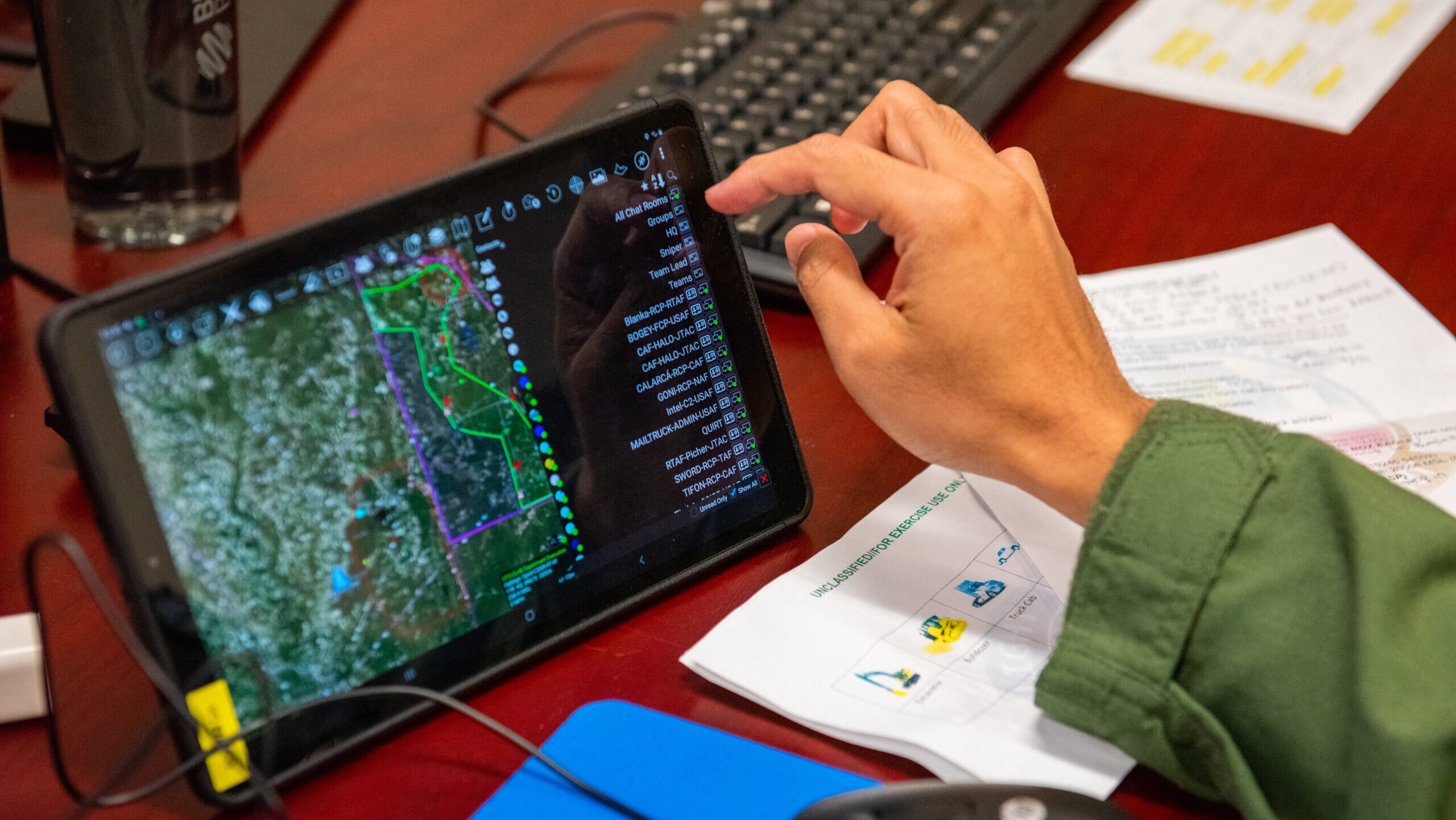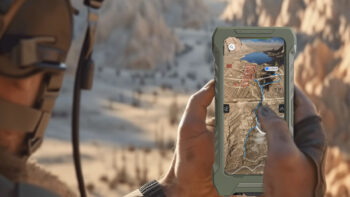
Royal Thai Air Force Flying Officer Apisit Kitchoke, command and control lead, uses Airborne Extensible Relay Over-Horizon Network software to track a flight during experimentation at Moody Air Force Base, Georgia, April 13, 2022. The AERONet data link is a command and control network which expands the U.S. Air Force’s ability to operate together with its allies and partners and provide complementary capabilities and forces. (U.S. Air Force photo by Airman 1st Class Courtney Sebastianelli)
I/ITSEC 2023 — The Pentagon must evolve to training for more “uncertainty” in order to be successful in a future fight, and one key step will be improving data sharing not just between allies and partners but also between the services and combatant commands themselves, a defense official said Wednesday.
“As we think about what training for the fight’ and ‘while we fight’ means, one adjustment that will need to be made is to the axiom that we educate for uncertainty and we train for certainty,” Caroline Baxter, deputy assistant secretary of defense for force education and training, said at I/ITSEC 2023 when speaking about how the Ukraine conflict has shown where gaps lie in the US military’s training.
“Yes, it may be certain that I’m going to have to use my rifle, but ‘when, why, against whom and alongside what other friendly capability’ is not,” she added. “But moreover, neither is it certain what will happen after that to include how the enemy will react, adapt and outpace me in the moment. Training while we fight demands we allow a little bit more uncertainty into the mix, emphasizing critical thinking in conflict to unleash spur of the moment ingenuity about how to marry capabilities together that have not been tested before.”
RELATED: As US Army transforms, it’s gleaning lessons about high- and low-tech fighting from Israel, Ukraine
Training for uncertainty will require an adjustment, she added, to include simulating an all-domain, adaptive and high-tempo battle space — and better real-time data sharing that will require. Baxter said that her office is working “really hard” on setting the foundation for the data sharing part.
While Pentagon officials have emphasized broad information sharing, to include different services and allied forces in the field, Baxter emphasized that the US military also must get better at sharing information within the service and between different combatant commands.
On the same panel, Rear Adm. Peter Vasely, J-7 deputy director of joint training on the Joint Staff, said there are currently barriers the service must overcome to evolve, the largest of which is a cultural and mindset that’s wary of risk and failure.
But he said DoD is “working to update the processes, procedures, authorities, to make it easier to share, to incentivize, to reduce those barriers so that we can actually learn from each other.”
Failing is where “optimal learning occurs,” Maj. Gen. Curtis Buzzard, commander of the US Army Maneuver Center of Excellence and Fort Moore, said.






















